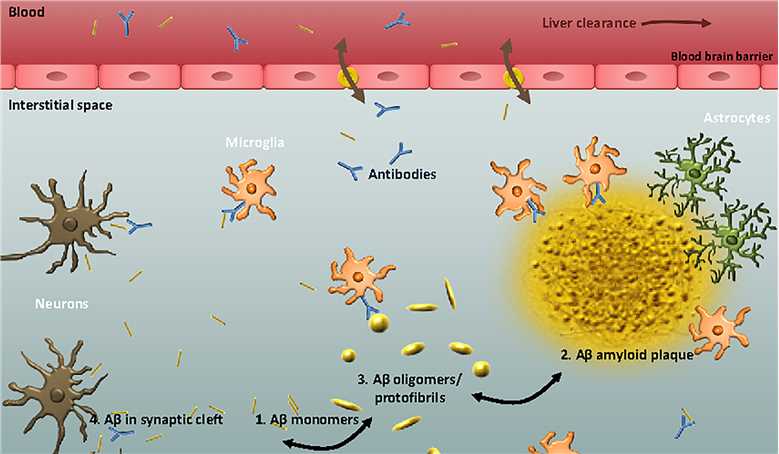The majority of potential disease-modifying therapies developed in recent years target Amyloid β (Aβ), include inhibitors of β-secretase and γ-secretase, and Aβ aggregation inhibitors. However, the most extensively developed is immunotherapy, which includes active immunization by stimulating the immune system to produce antibodies with the intact Aβ42 peptide or Aβ fragment and passive immunization by administering exogenous monoclonal antibodies (mAb) against Aβ. Both active and passive immunization strategies are potential pathways to enhance the clearance of neurotoxic Aβ species in the brain parenchyma. And active and passive approaches to immunotherapy both have pros and cons.
| Pros of Active Immunization | Cons of Active Immunization |
|
|
| Pros of Passive Immunization | Cons of Passive Immunization |
|
|
Mechanisms of Anti-Aβ Immunotherapy
An attractive feature of anti-Aβ immunotherapy is the diversity of molecules and the various mechanisms that can be targeted for therapeutic purposes. Antibodies can target the Aβ monomer and many soluble and insoluble Aβ aggregation intermediates. Even non-Aβ species, such as Aβ carrier proteins and transport channels, are potential targets.

Figure 1. Possible targets for anti-Aβ immunotherapy. (Adapted from Lannfelt L.; et al. Amyloid‐β‐directed immunotherapy for Alzheimer’s disease. Journal of Internal Medicine. 2014, 275(3): 284-295.)
Potential targets for anti-Aβ immunotherapy are listed as below:
Current Situation and Challenges of Anti-Aβ Immunotherapy
Anti-Aβ immunotherapy aims to address more directly the toxicity and clearance of Aβ, and is in principle the most straightforward approach, but has been more challenging than expected and has faced major problems in terms of safety and efficacy. To date, no active vaccine or mAb targeting Aβ has shown significant efficacy. We have no choice but to redouble our efforts and gain a deeper understanding of all aspects of the biological process of Alzheimer’s disease.
If you are interested in basic research or preclinical research related to anti-Aβ immunotherapy, Alzheimacy will provide you with comprehensive technical support, and please feel free to contact us.